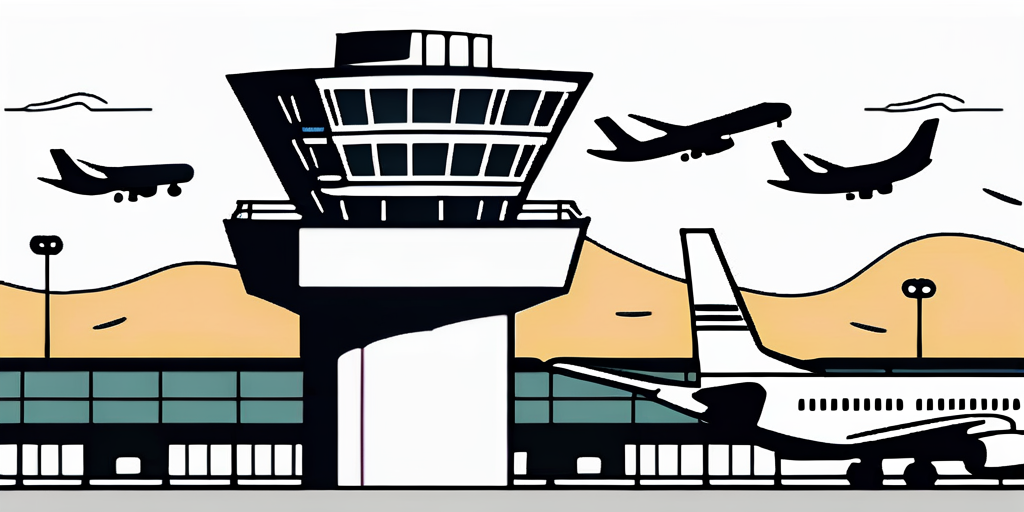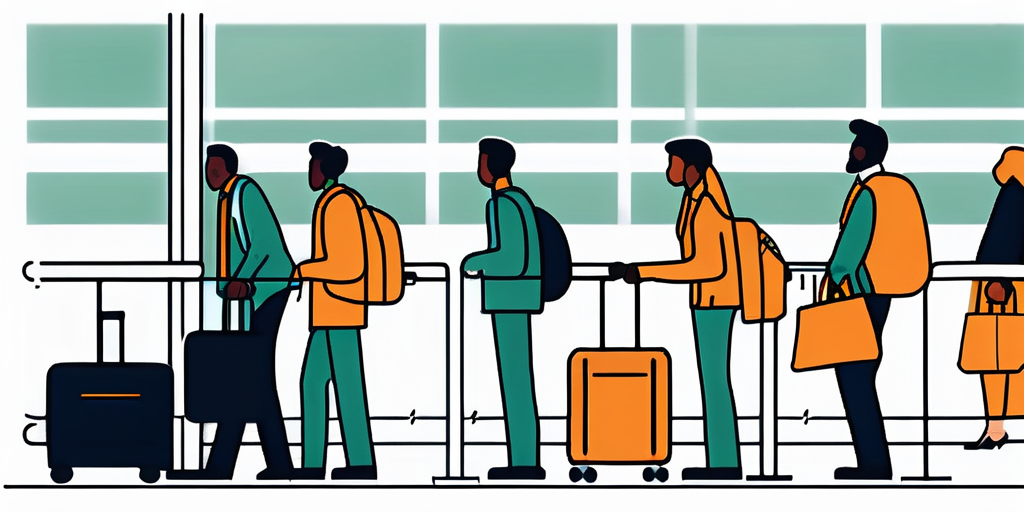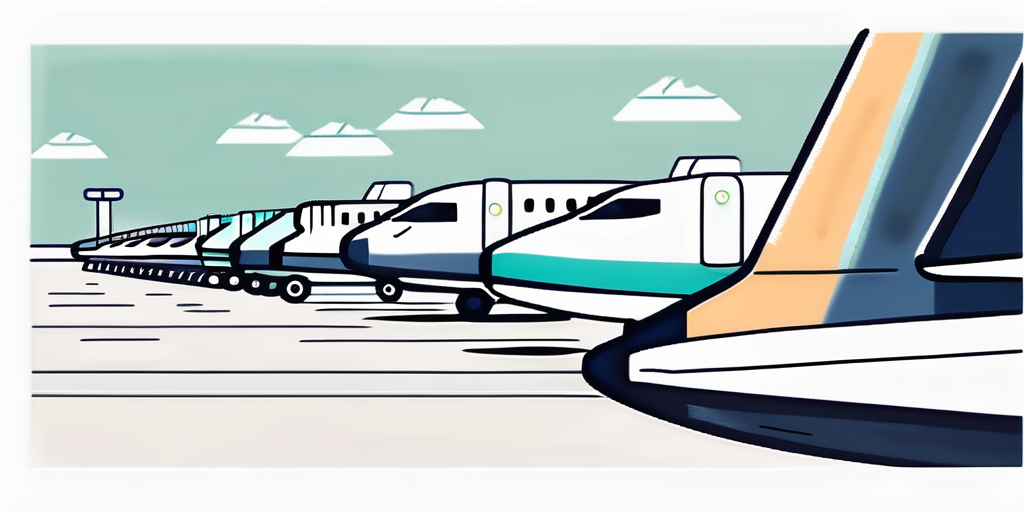Connecting Flight Delayed: What You Should Know
Learn what to do when your connecting flight is delayed. Discover essential steps and tips for managing travel disruptions effectively.
Flying can be a convenient and efficient way to travel, but it is not without its challenges. One such challenge is the possibility of delayed connecting flights. Understanding the basics of connecting flights and the causes of delays can help travelers navigate these situations more effectively. Additionally, knowing the impact of delayed connecting flights on travel plans and being aware of passenger rights and compensation options can make the experience less stressful. In this comprehensive guide, we will explore all these aspects and provide strategies to minimize the impact of delayed connecting flights.
Understanding the Basics of Connecting Flights
When booking a flight, there are often options for direct flights or flights with layovers. A connecting flight involves making a stop at an intermediate airport before reaching the final destination. The concept behind connecting flights is to provide passengers with more route options and potential cost savings. However, they also introduce the possibility of delays.
The Concept of Connecting Flights
Connecting flights are a crucial aspect of air travel. They allow airlines to offer flights between locations that may not have direct service. In some cases, passengers may intentionally choose connecting flights to take advantage of lower fares or to visit multiple destinations.
Imagine this scenario: You're planning a trip to Europe, and you want to explore not only one city but several. Connecting flights can be your ticket to an unforgettable adventure. Picture yourself starting your journey in New York, then making a stop in Paris before finally reaching your desired destination, Rome. With connecting flights, you have the opportunity to experience different cultures, try various cuisines, and create lasting memories in each city you visit.
How Connecting Flights Work
When passengers book a connecting flight, their travel itinerary consists of multiple flights operated by different airlines or even different aircraft. For example, a traveler flying from New York to Sydney might have a connecting flight in Los Angeles or Hong Kong. The timing between flights is typically referred to as a layover or connecting time. It is essential to factor in enough time for the layover to ensure a smooth transition between flights.
Let's dive deeper into the mechanics of connecting flights. During a layover, passengers have the opportunity to explore the connecting airport, indulge in duty-free shopping, or grab a bite to eat at one of the many restaurants. Airports around the world have become more than just transit points; they have transformed into vibrant hubs offering a wide range of amenities and services. From luxurious lounges to art installations and even spas, airports strive to make your layover experience as enjoyable and comfortable as possible.
Moreover, connecting flights allow airlines to optimize their operations and increase their network reach. By connecting passengers from various origins to different destinations, airlines can efficiently utilize their aircraft and offer more travel options. This interconnected web of flights not only benefits the airlines but also opens up a world of possibilities for travelers, making it easier to reach even the most remote corners of the globe.
The Causes of Flight Delays
Flight delays can occur for a variety of reasons, ranging from weather-related issues to technical problems. Understanding these causes can help travelers anticipate potential delays and make informed decisions when booking flights.
 Let's dive deeper into some of the most common causes of flight delays:
Let's dive deeper into some of the most common causes of flight delays:
Weather-Related Delays
Inclement weather, such as thunderstorms, snowstorms, or heavy fog, can significantly impact flight schedules. Airlines prioritize passenger safety and may delay or cancel flights when weather conditions pose a risk. Thunderstorms, for example, can create strong winds, heavy rain, and lightning, making it unsafe for aircraft to take off or land. Similarly, snowstorms can lead to poor visibility and icy runways, making it difficult for pilots to operate safely. In such situations, airlines work closely with meteorologists and air traffic control to assess the severity of the weather and determine the best course of action to ensure passenger safety.
Technical Issues and Maintenance Delays
Aircraft require regular maintenance to ensure optimal safety and performance. If an issue is detected during routine checks or if a mechanical problem arises, the flight may be delayed while repairs are made. These maintenance delays are crucial for ensuring that the aircraft is in top condition before taking off. From engine malfunctions to faulty navigation systems, airlines have stringent protocols in place to address technical issues promptly. Highly skilled maintenance crews work diligently to resolve these problems as quickly as possible, minimizing the impact on passengers' travel plans.
Air Traffic Control and Security Delays
Air traffic congestion and security procedures can also cause delays. During busy periods, air traffic control may implement flow control measures to manage the number of aircraft in a given airspace. This is done to maintain safe distances between planes and prevent overcrowding in the sky. While these measures are essential for ensuring air travel safety, they can result in delays as flights are held on the ground until the congestion eases. Additionally, security checks and protocols play a vital role in keeping passengers safe. However, these necessary procedures can sometimes cause delays during the boarding and disembarking processes. Stringent security measures, such as thorough baggage screening and passenger identity verification, are put in place to maintain the highest level of safety and security for all travelers.
By understanding the various causes of flight delays, travelers can have a better grasp of the factors that may affect their journeys. While delays can be frustrating, it is important to remember that airlines prioritize passenger safety above all else. By staying informed and being prepared, passengers can navigate these challenges with patience and make the most of their travel experiences.
The Impact of Delayed Connecting Flights on Travel Plans
Delayed connecting flights can have significant consequences for travelers. Understanding the potential impacts can help individuals prepare and mitigate the challenges that arise.

Missed Connections and Their Consequences
One of the most significant impacts of delayed connecting flights is the possibility of missed connections. If the initial flight is delayed, passengers may not have enough time to reach their next flight. This can lead to disruptions in travel plans, such as missing important events or business meetings.
Imagine you have a crucial business meeting in a foreign country, and your connecting flight is delayed. As the minutes tick by, you start to worry about the precious time slipping away. The missed connection not only jeopardizes your professional reputation but also puts your entire business venture at risk. The consequences of a delayed connecting flight can extend far beyond inconvenience.
The Effect on Travel Itinerary
Delayed connecting flights can cause a ripple effect on the entire travel itinerary. If the delay is significant, travelers may need to reschedule subsequent flights, hotel bookings, or ground transportation. These adjustments can incur additional expenses and logistical challenges.
Picture this: you have meticulously planned a dream vacation, with every detail carefully arranged. However, a delayed connecting flight throws a wrench into your well-laid plans. Now, not only do you have to deal with the frustration of waiting for hours at the airport, but you also have to rearrange your entire itinerary. The hotel you booked for the first night? Non-refundable. The guided tour you were excited about? Already sold out. The impact of a delayed connecting flight can turn a dream vacation into a logistical nightmare.
The Emotional Stress of Flight Delays
Flight delays can be emotionally draining, especially when they impact important plans or result in extended wait times at airports. The uncertainty and frustration associated with delays can create stress and anxiety for travelers.
Close your eyes and imagine the feeling of helplessness when you receive the news of a delayed connecting flight. Your heart sinks as you realize that the carefully planned vacation or long-awaited family reunion is now hanging in the balance. The emotional toll of flight delays can be immense, leaving travelers feeling exhausted and disheartened.
Moreover, the extended wait times at airports can exacerbate the emotional stress. Sitting in uncomfortable chairs, surrounded by tired and frustrated fellow passengers, can make the hours feel like an eternity. The impact of delayed connecting flights goes beyond inconvenience; it affects travelers on a deeply emotional level.
Rights and Compensation for Delayed Flights
Passengers have rights and may be entitled to compensation in the event of a delayed flight, depending on various factors. Understanding these rights can empower individuals to seek appropriate compensation when necessary.

Understanding Passenger Rights
Passenger rights can vary depending on the airline, departure country, and destination. In some cases, passengers may be entitled to compensation for delays exceeding a certain duration or for significant disruptions to travel plans. Familiarizing yourself with these rights can help you assert your claims when necessary.
How to Claim Compensation for Delayed Flights
If you are eligible for compensation due to a delayed connecting flight, there are specific steps you can take to claim what you are entitled to. Be sure to gather all relevant documentation and reach out to the airline or seek assistance from relevant authorities to initiate the compensation process.
Strategies to Minimize the Impact of Delayed Connecting Flights
While flight delays are not entirely avoidable, there are strategies travelers can employ to minimize their impact on travel plans. Consider the following suggestions when booking and managing your flights.
Choosing Direct Flights Over Connections
One way to reduce the likelihood of delayed connecting flights is to opt for direct flights whenever possible. Direct flights eliminate the need for layovers and, therefore, eliminate the potential for delays caused by missed connections.
Scheduling Longer Layovers
If you must book a connecting flight, consider scheduling longer layovers between flights. This allows for more cushion in case of delays and provides additional time to navigate through the airport or handle unforeseen circumstances.
Using Flight Tracking Apps
Flight tracking apps can provide real-time updates on flight statuses, including delays and gate changes. By staying informed about any changes, you can make necessary adjustments to your travel plans and avoid unnecessary stress.
In conclusion, delayed connecting flights can have a significant impact on travel plans. Understanding the basics of connecting flights, the causes of delays, and the rights and compensation options available can help travelers navigate these situations more effectively. By implementing strategies to minimize the impact of delays, such as choosing direct flights or scheduling longer layovers, passengers can reduce the potential stress and inconvenience associated with delayed connecting flights. Remember to stay informed through flight tracking apps and be proactive in asserting your rights if you are eligible for compensation. By arming yourself with knowledge and being prepared, you can make the most out of your travel experiences, even when faced with delayed connecting flights.
Ready for Compensation? Let ClaimCompass Assist You
If you've experienced a delayed connecting flight, ClaimCompass is here to help. We specialize in securing up to 600€ in compensation for air passengers affected by flight delays, cancellations, and overbookings. Our expertise in EU Regulation 261/2004 allows us to efficiently determine your eligibility for a claim. With our no-win, no-fee policy, you can use our compensation calculator to check your eligibility for free and find out how much you could be owed. There's absolutely no risk to you; if we don't succeed in claiming your compensation, you owe us nothing. If we do, we only retain a 35% commission (incl. VAT). Don't let airline disruptions set you back. Submit a claim with ClaimCompass today and let us take the hassle out of claiming what's rightfully yours.
